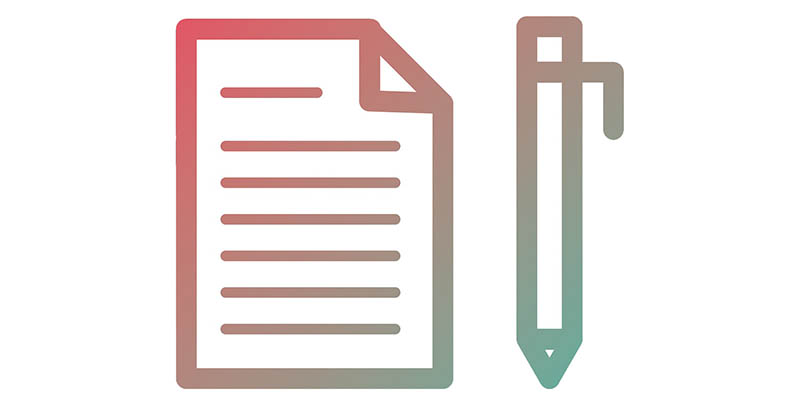
Psychological research has yielded a ton of fascinating precepts that can help us create better websites. By utilizing these psychology hacks, we can improve our websites’ effectiveness, increasing revenue and driving more traffic.
Beneficial Defaults

In the United States, we have a problem with organ donations: very few people participate. This means that life-saving operations can’t be performed, leading to long waits for patients that need new organs. Countries like Austria, however, don’t have this problem. What’s the difference? A beneficial default.
In Austria, it’s assumed that you’ll donate your organs at your time of death. That’s the default state. If you don’t want to donate your organs, you have to specifically opt out of organ donation scheme. Since people are generally lazy, things are already tilted in favor of organ donation. And when you add the apparent social pressure of doing things the way “everyone else” does it, you can see why Austria has an incredibly high donation rate. In the United States, people must specifically opt in to the organ donation scheme. While it’s promoted regularly, people are simply more likely to stick with the default, even when life and death are on the line.
We can take advantage of our user’s general inertia by setting defaults that benefit us. The lowest-impact implementation of this hack is a pre-checked box signing new users up for your newsletter, but you can get more complex. If your website solicits donations, for example, you can set a specific value as the default for new donations. This way, folks have to specifically override the amount. As long as the amount is reasonable, you’ll typically find that most users stick with the preset amount. Set a default value that works best for you, and rely on users to override that decision as necessary.
Anchoring

In sales and negotiating, that kind of pricing strategy has a lot in common with “anchoring.” The first number you offer in a sale or negotiation has disproportionate weight, acting as an anchor. Your negotiating partner will tend to stay around that number, provided it’s within a reasonable range. This can be both a benefit and a curse. Anchor too low, and it will be impossible to work your way up to an ideal price. Anchor too high, and you’ll drive away customers who perceive the price as out of their league. You need to anchor in a sweet spot that encourages users to hang around while stacking the deck in your favor.
To discuss donations again, setting a beneficial default can also lead to strong anchoring behavior. If our starting value is $20, we’ll see that most donations tend to collect around a mean of $20. Moving the anchor up or down will tend to move the mean accordingly. You’ll need to experiment with your anchoring to make sure that you’re not driving away potential clients and customers, so be agile and responsive when you’re finding the most appropriate anchor point.
Perceived Exclusivity
We all want to be treated like the unique individuals we are. If we can convince our users that they’re getting a limited-time offer, we can drive users to make more purchases to take advantage of this perceived opportunity. When stores have “one-day only” sales, they’re creating an atmosphere of exclusivity. When stock of a product is artificially limited (diamonds come to mind), companies are creating exclusivity. And since humans don’t want to miss out on a rare opportunity, we flock to the sales. We can use the same psychology hack on our website.
However, it’s crucial that you’re accurate. Infomercials are a great example of this strategy done poorly. So many of them demand you call in the next 20 minutes, but that’s total baloney: the person taking your phone call has no way of knowing when you last saw the commercial. They’re creating an obviously false atmosphere of exclusivity in an attempt to lure customers. Treating potential customers like idiots will often backfire, so you should avoid it. Make sure your sales are discounts really are time-limited and significant, or you’ll find your users don’t care too much about the next “opportunity.”
Limit Choices
Recent psychological research has illuminated a phenomenon known as “choice paralysis.” When presented with too many options, humans have a tendency to shut down. We either make no decision, or make a decision that we end up regretting later. Designers should avoid this whenever possible by limiting the number of options our users can select. More options doesn’t mean better options.
Let’s imagine you run a website that sells customized suits. You might use a web interface that limits the number of options available to users to a predetermined few. Too many options, and they’ll end up putting off ordering indefinitely just to avoid making a decision. This is especially true when users aren’t given enough information to make decisions, or they feel like they have limited expertise in the area. If you don’t want to cut out the experts, you might design your web interface to offer only a few options, and then provide a way for true power users to contact you directly and add a greater degree of customization.
You might also like:
Common UX Mistakes and How to Avoid (or Fix) Them
25 Ecommerce UX Tips You Need to Know
Build Better Contact Forms with These Guidelines
The post Psychology Hacks to Improve Your Website’s Effectiveness appeared first on SpyreStudios.















